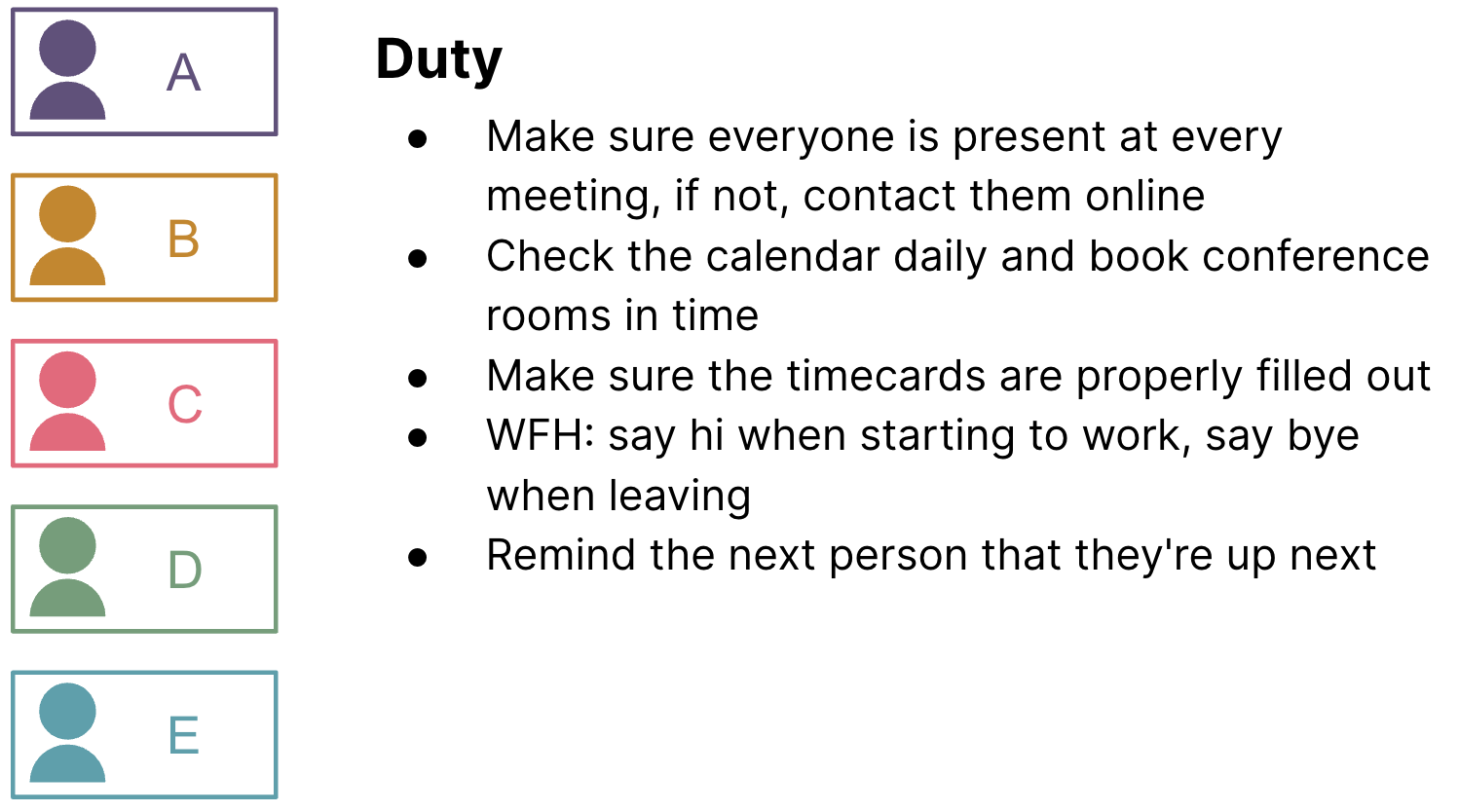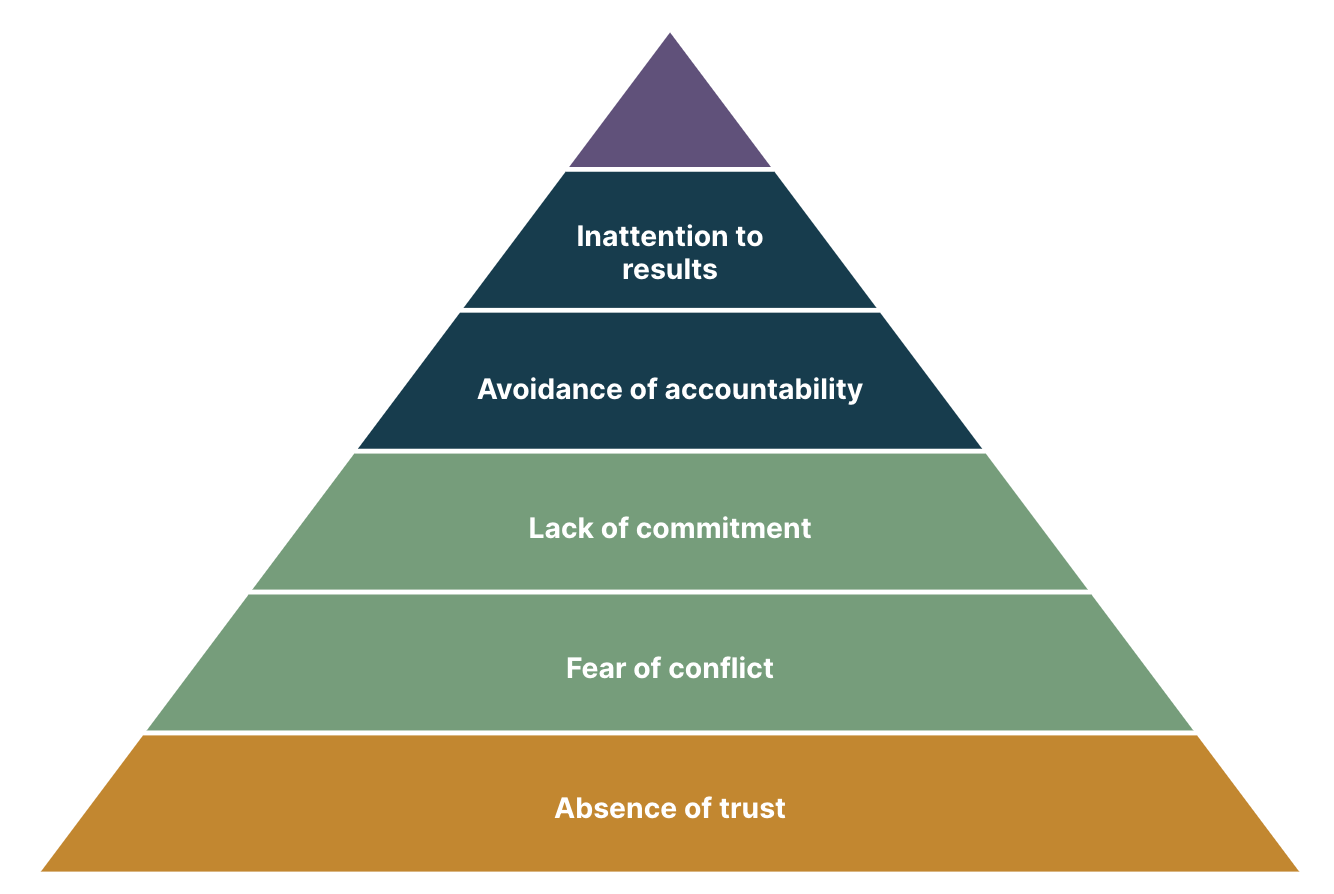In the first part, we described the challenges that teams face and started offering solutions to these problems. In this part, we’ll explore the remaining team dysfunctions.
Fear of conflict
1. Pair Metrics
Pairing involves deep cooperation, so that even two unfamiliar people will become quite close after a few rounds of pairing. We can set a fixed exchange Pair time according to the complexity of the team's technology and business. For example, one iteration (two weeks). At the end of each iteration, regardless of whether the current story card is finished or not, we will switch pairs according to the data of Pair Metrics. The unfinished story card allows one of them to take it to the next Pair. In this way, the communication and integration of business knowledge and technology within the team can be accelerated to facilitate further communication. On the surface, it reduces the possibility of "conflict," but in essence, it can effectively promote constructive debate.


Number of times two people have worked together
2. Speedback
Feedback culture is deeply rooted in our company; Speedback is a lightweight version of Feedback where people work in pairs and have four minutes to exchange feedback. It's not recommended to force a Speedback, but it can usually be done when a new person has joined the team, the project is in its final stages, or if the team atmosphere has been a little rocky lately and everyone needs to chat.
3. Retro
Unless there are special circumstances, Retro should be done together with clients so that we can discuss problems and solutions with them and so that they feel nothing is kept from them.
Fear of conflict usually manifests as low participation in meetings or boring meetings. Why are meetings boring? By analogy, most people enjoy watching movies. Why don't they find movies boring? Because movies have conflict! This conflict may be family, friendship, love, politics, or a mixture of all. Conflict makes the audience invested. Similarly, in meetings held to solve a certain problem, it’s impossible for every member of the team to have the same idea. If everyone can actively participate and carry out an in-depth exchange of ideas, the meeting won’t be boring.
Lack of commitment
1. “Awesome Sharing”
To solve a lack of commitment, we need to create a safe environment for discussion, which is "Awesome Sharing." We take turns to share any topic, such as a skill we’ve just perfected, scientific knowledge, or even a blog. This session doesn’t need to be formal or well-prepared, it’s just a way for people to discuss things and learn from each other. If everyone can actively join in, the team will gradually become more technical, and everyone will develop the habit of actively asking questions and joining in discussions. Examples of topics we’ve covered include: Scala Monad Transformer, Category Theory and Game: You Draw and I Guess.
2. Direct Conversations
The simplest way to deal with someone not being fully involved in the team is to give them a friendly reminder to be more active. With trust having already been established, direct reminders are efficient and quick ways to get people’s attention back.
Avoidance of accountability
1. Duty Rotation System
The most effective way to ensure that a team works efficiently is through peer pressure. This is the foundation of the on-duty rotation system. Each member of the team takes turns to assume the "on-duty" role, and the rotation time is negotiated by the team itself. We do it once a week, and during the period of on-duty, we need to take on many responsibilities, such as reminding everybody to be on time, booking meeting rooms in advance, organizing Awesome Sharing, etc.. At first you may need reminders from your leader, but after several rounds, you will be better at implementing agile practices. More than any rule or institution, the fear of letting your colleagues down motivates you to work hard and get better.


2. As Leader: Low Risk Incentives
As a Leader, you need to be able to recognize and judge each team member’s character and status. Then, you can assign low-risk modules to certain team members who meet the necessary requirements. Taking on more responsibility gives them more space to grow. It also reduces team pressure while contributing to internal capacity building.
Inattention to results
There are no specific practices for this because this dysfunction manifests in multiple different ways.
Team building results


As the picture above shows, the dysfunctions build on each other, meaning that the lower levels can lead to the problems described in the upper levels. The process of team building itself isn’t easy, but try to do everything well, respect every team member, and there won’t be large problems. Teams also need to be inclusive. It is because teams are made up of different imperfect people that they can succeed.
Practice shows that in small teams, it’s not advisable to make a perfect and careful plan from the beginning. In small, self-organizing teams, just tell people what the idea is, why it's being done, what problem it's solving or what value it's adding, and how it's being done, when it's being done, what the output is, and the team will give you the most appropriate answers. The following are the results of our team building in one year:
Efficient meetings: Everyone fully participates in discussions, ideas collide, and agreement is finally reached;
Willingness to share: Strong technical atmosphere, willingness to explore yourself, and insist on Awesome Sharing every week to share new technologies and ideas;
High cohesion and low coupling: You need strong cohesion in the face of difficulties to make sure the interests of the team come first;
- Self-organizing team: The team works spontaneously and has the ability to face emergencies.
Disclaimer: The statements and opinions expressed in this article are those of the author(s) and do not necessarily reflect the positions of Thoughtworks.


















